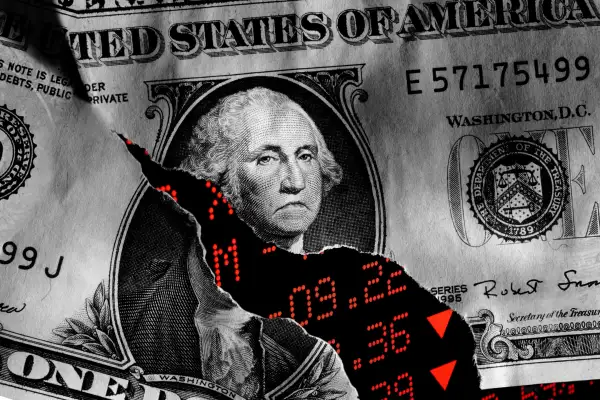4 Facts Showing Just How Badly Stocks Are Doing This Year
Money is not a client of any investment adviser featured on this page. The information provided on this page is for educational purposes only and is not intended as investment advice. Money does not offer advisory services.

Fingers crossed that stocks perform better in the second half of 2022 than they did in the first half.
If you've taken a look at your stock portfolio anytime between early January and now, you know what we mean. Stocks have suffered a major decline amid sky-high inflation and the Federal Reserve raising interest rates to battle those high costs.
The S&P 500 — a benchmark index that is used as a common proxy to measure how stocks are doing overall — officially fell into a bear market in June, meaning that the index dropped at least 20% from its previous high. Experts are split on whether or not the U.S. will be able to avoid a recession while the Fed attempts to tamp down inflation, and all eyes will be on the central bank moving forward.
But in the meantime, here are four facts that show just how poorly stocks did in the first six months of the year, along with what could be coming next.
Worst investment returns since 1970
The S&P 500 ended June 2022 down 20.6% — its worst showing for the first six months of a year in more than five decades.
That is the S&P's worst January-through-June performance since 1970, when the index fell 21%, according to Quincy Krosby, chief equity strategist for LPL Financial. After that plunge, though, the market recovered 27% in the second half, she told Money via email.
Only energy stocks are winning
Ten out of 11 S&P 500 sectors, which cover industries ranging from health care to industrials to tech, fell during the first half of the year, according to Howard Silverblatt, senior index analyst for S&P Dow Jones Indices. Consumer discretionary stocks in the index, which include shares of companies that offer non-essential goods and services like entertainment, were down 33% for the year as of June 30. Communication services stocks in the index fell 30%, and information technology stocks plunged 27%.
The only sector in which stocks turned positive over the last six months is the energy sector, which took a nose dive in 2020 when the pandemic first hit but jumped 29% for the first half of 2022 amid the Russia-Ukraine war that disrupted oil supply, plus a return of travel and office commutes.
"We do have high demand for oil as economies continue to normalize and are recovering following the pandemic," David Sekera, chief U.S. market strategist for Morningstar, told Money in June. "The market between oil supply and oil demand is very tight."
Inflation could make quick recovery unlikely
During the onset of COVID-19, stocks crashed but then quickly recovered, marking the shortest bear market in history.
"In 2020, a record short bear market commenced on February 19, hit the -20% threshold 16 trading days later on March 12, bottomed another seven trading days after that on March 23, and recovered within five months on August 18," strategists at Wells Fargo Investment Institute wrote in a report Tuesday.
Don't expect the same this time, they warn.
"It took the current bear market 111 days to reach bear market territory, and we expect it will take time to repair as major central banks are prepared to tighten in order to contain inflation," the group wrote.
Historical trends suggest a rough Q3
What does this mean for the rest of the year? History suggests investors might need to wait until late in the year to see improvement.
Sam Stovall, chief investment strategist at CFRA Research, pointed out in a recent research note that market performance patterns dating back to World War II suggest a tough third quarter could be on tap. Similar market cycles in the first half of a year have meant a negative Q3 return more than half the time, he said.
But don't get discouraged quite yet. The final three months of the year could deliver relief, and the upcoming midterm elections could produce a silver bullet that slays this bear market.
"In Q4, the market delivered encouraging results, rising in price from 3.0% to 4.3%, on average, and posting an up quarter 75%+ of the time," Stovall wrote. "Better yet, mid-term election years not only saw a Q4 average gain of 9.9% but also rose in price 100% of the time."
More from Money:
Falling Stock Prices Are Putting Your Retirement Dreams in Danger
7 Best Online Stock Trading Platforms of 2022


